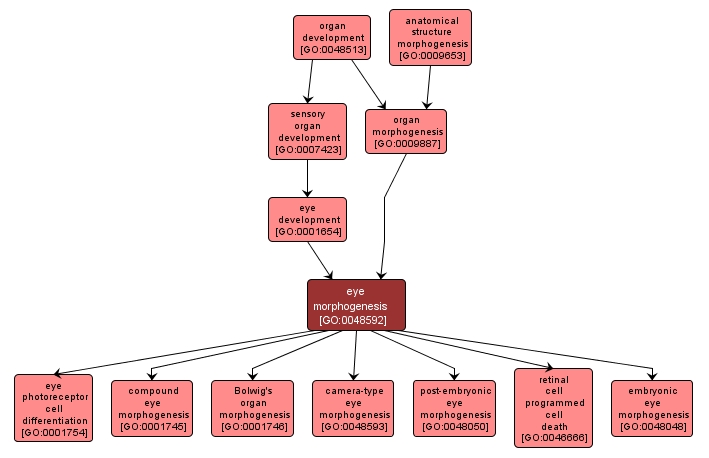GO TERM SUMMARY
|
| Name: |
eye morphogenesis |
| Acc: |
GO:0048592 |
| Aspect: |
Biological Process |
| Desc: |
The process by which the anatomical structures of the eye are generated and organized. Morphogenesis pertains to the creation of form. |
| Synonyms:
|
|

|
INTERACTIVE GO GRAPH
|














